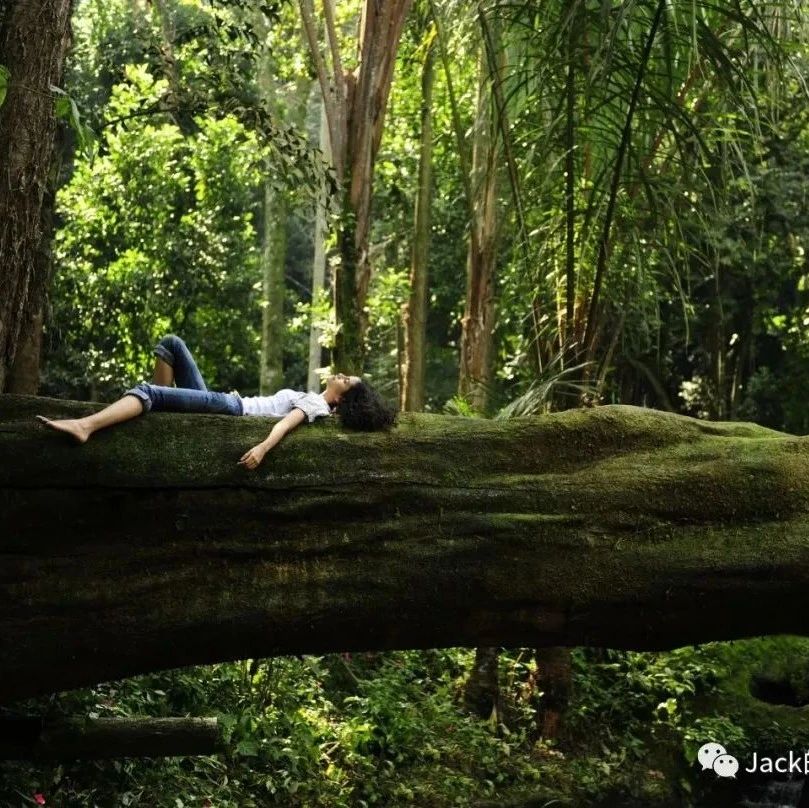Links Between East and West 43 Nature Serves Life 东西方的连接43 - 自然与生命

(A map of ancient Sumerian cities that sprang up along the banks of the Tigris and Euphrates rivers, c. 3500 BCE)
Since the dawn of civilization, humanity has attempted to explore its relationship with nature thoroughly. In ancient Mesopotamia and Egypt, the residents of the first cities effectively utilized the flooding of the great rivers to cultivate their crops and sustain an increasing population; in the times of the ancient Greek and Roman polymaths, people attempted to study nature through the lens of science systematically; in more recent history, with the rise of luminaries like Charles Darwin, Henry David Thoreau, Virginia Woolf, and Albert Einstein, the benefits of taking in the natural world were elaborated in an ever more eloquent sense. Human civilization appears to share an innate and inextricable bond with nature, bringing forth the question: How does nature serve life? This essay will answer this question by showing two kinds of life that nature serves and then intrinsically explore the relationship between nature and the force of life itself.
Nature first serves the life that desires to heal. Such a life might be increasingly common in the modern world. By the word “healing,” one should not simply refer to the rehabilitation of the physical body (for example, a physical wound healing up) but rather view it from a more holistic perspective. Today, people are plagued by a plethora of mental or spiritual issues, such as depression, growing feelings of emptiness, or unquenchable stress levels. While these issues might not manifest themselves in various deteriorations of the physical health of an individual, they can deliver chronic damage to one’s mental health and quality of life. Some might argue that from a purely scientific standpoint, most people are still classified as healthy individuals on both physical and mental levels. This argument has merit but does not invalidate the claim that people still require healing. When one sits in front of a screen for too long, a feeling of dizziness and emptiness hits almost naturally. To stay healthy, people must recover from such states.
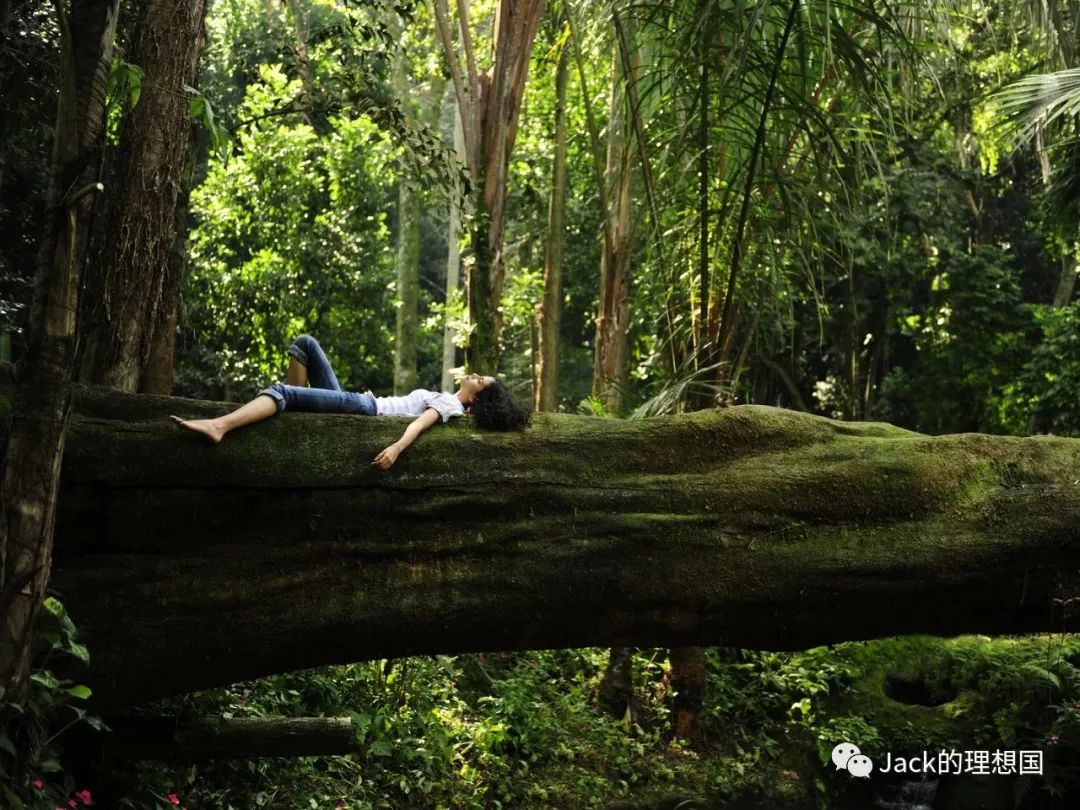
Here, nature comes into play. To explain how nature serves a life that needs thorough rehabilitation first requires an understanding from a scientific perspective. Frederick Law Olmsted, the 19th-century architect of many well-designed American parks, pointed out, “Nature employs the mind without fatigue and yet enlivens it. Tranquilizes it and enlivens it. And thus, through the influences of the mind over body, gives the effect of refreshing rest and reinvigoration to the whole system.” This quote suggests that immersion in nature initially allows the mind to relax fully, consequently delivering vitality to the physical body. To broadly prove this point, physician Qing Li designed a series of early forest bathing experiments in which people immersed themselves in the woods. A week after the experiment started, the stress hormones of most participants measurably lowered, indicating that their minds winded down. Next, blood pressure dropped, and signs of immune system health improved markedly. In another experiment devised by the same Qing Li, researchers asked participants to sleep overnight while breathing in essential oil from the Japanese cedar tree. By the end of this experiment, most participants reported having lower stress hormone levels and much better sleep.
Some scientists espouse a theory known as the “attention restoration theory.” This theory posits that the inherent beauty and mystery of the natural world fascinate the human mind, letting it undergo an “enticing but not demanding” experience. Neuroscience research demonstrates that looking at nature pictures helps the “hard-working executive function parts of the brain recover” compared to looking at urban landscapes. Other scientists attribute the healing aspect of nature to the sense of awe when surrounded by natural elements or the postulation that one’s feelings and body rhythms are paired with the natural environment. Whatever the scientific explanation, nature is proven to serve a life that desires healing effectively.
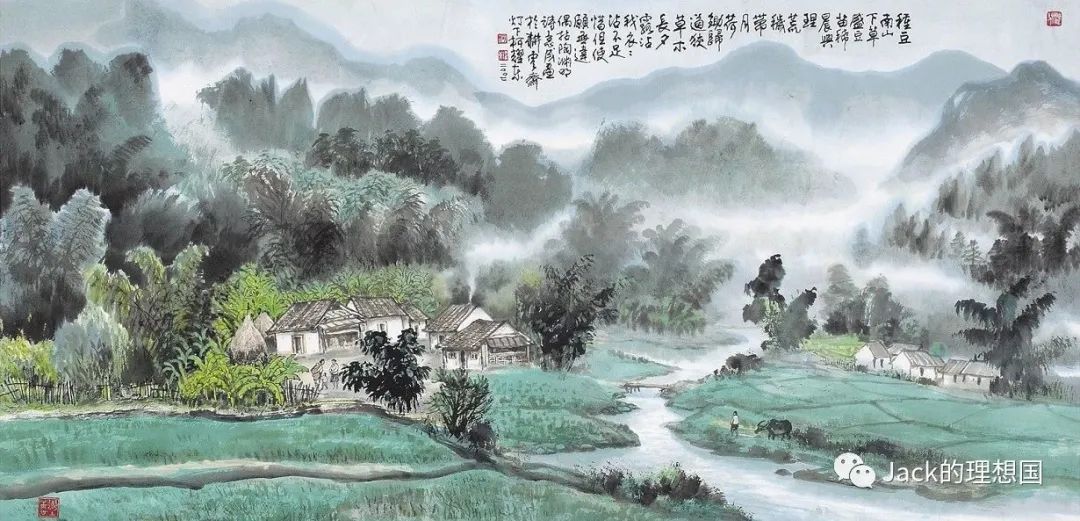
From a philosophical viewpoint, nature assists an individual in healing because it permits them to live an easier, slower-paced life, further allowing each body part to connect soundly with natural elements. A poem written by Chinese poet Tao Yuanming (c. 365-427 CE) alludes to this viewpoint. The poem's final lines are, “When I escape from bitter strife with men, I live a free and easy life again.” Before this exclamation, Tao wrote, "By mistake, I sought mundane careers / And got entrapped in them for thirty years.” He compared his will to live an unfettered, slow-paced life to “birds in the cage [longing] for wooded hills” and “fish in the pond [yearning] for flowing rills.” Tao believed that nature was a utopia where he could retreat from the befuddling complexities of politics and the deceptive lures of life in the city. These complexities and lures set Tao’s mind spinning at an overly fast speed, causing him to suffer from prolonged periods of information overload and significant mental fatigue. By embracing nature, Tao hoped to “decelerate” and reconnect with the fundamental components of the world, hence curing his anxiety and fatigue.
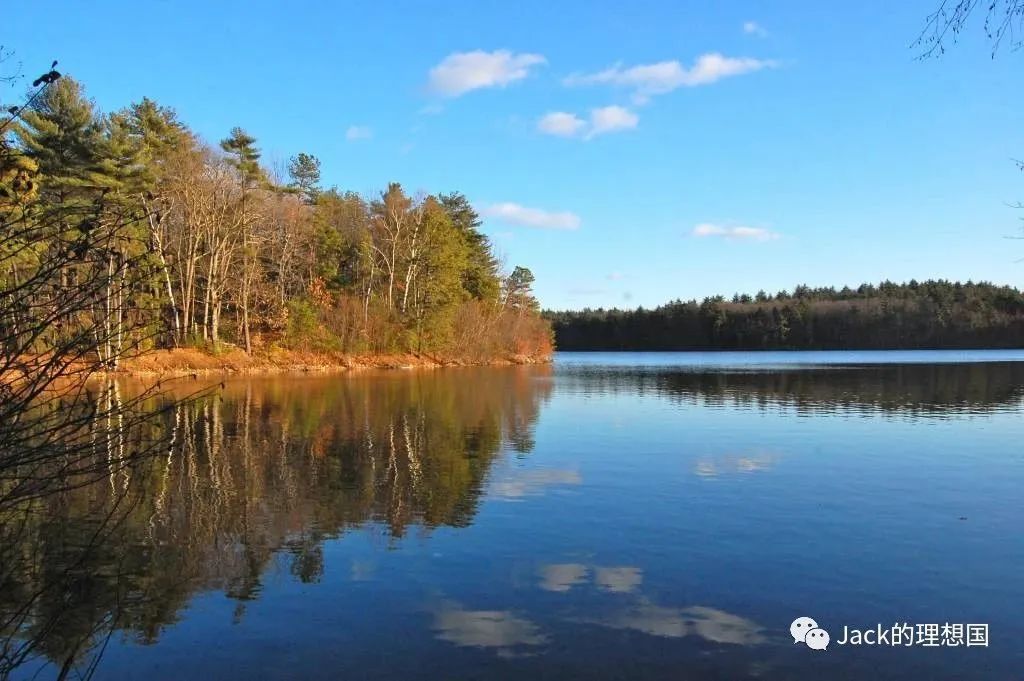
In the Western philosophical tradition, nature is also associated with slowing down and leading a life with unblemished simplicity. Even for a theorist like Jean-Jacques Rousseau, who was so obsessed with studying the human state, nature was an element he could not ignore in his philosophical explorations. In multiple pieces of writing, he pointed to the importance of returning to the wild, as doing so would keep one’s mind clear and gradually cause mental weariness to wear off. Almost a generation after Rousseau, Henry David Thoreau was especially renowned for his calls to travel back to nature. In Walden, a series of 18 essays, he thoroughly elaborated on his experiment in basic living and his effort to set his time free for leisure. Some of the content describes his determination to live as self-sufficiently as possible, while some depict his intimacy with the small animals he encountered. While some might understand Walden simply as a work that portrays the inherent beauties of the natural world, it contains Thoreau’s belief that positioning oneself in nature can heal the inevitable ailments of life in industrial cities.
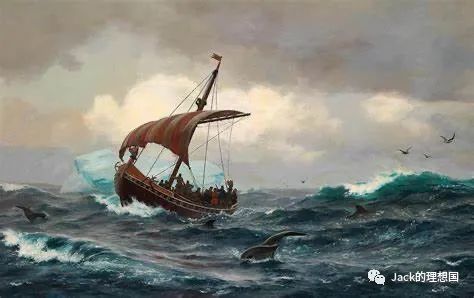
The second kind of life that nature serves is the courageous. Physically, the courageous life is eager for bold explorations into the unknown and adventures that appeal to all body senses; mentally, the courageous life is open-minded, creative, and unrestrained. One can find many individuals that embodied such lives in the annals of history. Figures such as Pytheas (the first Greek to visit and describe the British Isles and the Atlantic coast of Europe), Erik the Red (the renowned Viking founder of the first European settlement on Greenland), and even Marco Polo can all be categorized as leading courageous lives. But one does not need to prove themselves an intrepid explorer to own a courageous life. Every individual who endeavors for unknown opportunities, who dares to imagine the wildest dreams, are, in effect, demonstrating bravery at its essence.

Nature serves this life first by providing a boundless environment for these courageous souls to realize their needs and desires. Nature’s power lies in its ability to present a coexistence of grandeur and subtleness. Furious waves that clash with austere-looking rocks and the minuscule dew that forms on a leaf in the early morning can occur in the same setting. This unique power of nature favors the courageous soul because it lets that soul indulge in the sheer complexity and unpredictability of the surrounding environment. For example, an oceanic “blue hole” is an underwater sinkhole with a vertical depth of over 100 meters. A diver can expect to find a vast array of marine life inside a blue hole. However, a blue hole can become a hellish environment with little lighting and intense pressure when reaching a certain depth. Over the years, several divers lost their lives in blue holes, revealing their fascinating yet dangerous nature. A blue hole can serve an intrepid explorer’s desire to challenge the unknown and be in awe of nature’s majesty. When such desires are fulfilled, that explorer might feel invigorated and willing to embark on other journeys.
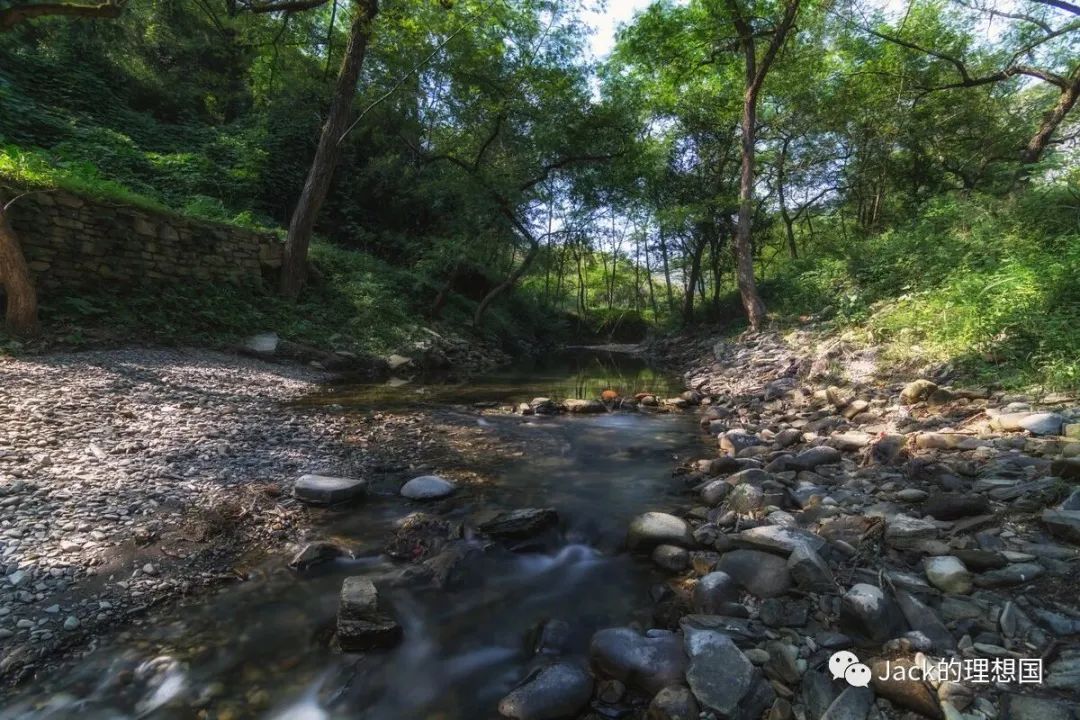
More importantly, a courageous life can derive further courage from nature. Nature comprises many sources of strength and inspiration. The German composer Ludwig von Beethoven was exactly a valiant man to take courage from nature. He was valiant for his staunchly strong take on life and destiny and his unquenchable belief in the power of music. Beethoven became almost completely deaf by 1804, which could be a death toll for musicians at his time. But Beethoven refused to give up his faith in music. In 1808, he composed “Symphony No. 6: Pastoral,” aiming to depict his merry sojourn in a countryside village. The most shocking movement of this symphony is arguably the second one, titled “By the Creek.” At the piece's start, the strings play a slow, long phrase in B-flat major that delineates the creek's flow, the quails that chirp above, and the cool spring breeze gliding across the water's surface. At the end of this movement, Beethoven uniquely arranged a special section where the flute, oboe, and clarinet mimic the sounds of the nightingale, quail, and cuckoo, respectively. By this point, Beethoven cannot hear a single sound, which would discourage most to abandon life. Yet, he still composed such accurate, romantic, and profound orchestral music. Seeing the reflections of the clouds and trees on the creek and watching some tadpoles and water plants dance with the water’s flow must have given him immense strength – a strength to continue reveling in nature and using music to calm his heart. Nature hence serves the valiant life who desires to derive strength from its elements.
Finally, nature serves as the force of life itself. This is quite intuitive as humankind evolved in nature. No matter how societies develop and how many artificial rules people create, the human race’s bond with nature stays unbreakable. Every individual can realize that it is impossible to survive physically and mentally without nature. This point explains why, throughout history, from the Spring and Autumn Period in China to the Renaissance in Europe or to the roaring age of industrialization in 19th-century America, there were calls to refocus on the indispensableness of nature. Today, even though we seem to crown ourselves as Homo Deus, the new gods of the planet, able to dictate the life and death of most if not all, organisms on this planet, it is still too hazardous to cut our ties with nature. Even if technologies advance to such a point that we do not rely on nature to maintain our body's physical functions, our minds are still tuned to its rhythms. Nature is our mother. The deeper meaning of this claim may be that, like how a child needs their mother to nourish their personality, to develop their perceptions of the world, humankind needs nature to heal our souls, awaken the slumbering mind in the virtual setting, and overcome the many fears of navigating an increasingly complex world.
PICTURES CITED
https://www.researchgate.net/figure/several-ancient-cities-in-Mesopotamia-By-the-end-of-the-third-millennium-90-of-the_fig7_322209120
https://www.phoenixfm.com/2019/06/03/forest-bathing-brentwood-sunday-9th-june/
https://www.gushixuexi.com/doc/1203.html
https://www.writework.com/essay/critical-lens-essay-quote-classicism-health-romanticism-di
https://www.messagetoeagle.com/erik-the-red-famous-viking-outlaw-who-colonized-greenland-and-was-father-of-leif-erikson/
https://www.belizetravelmag.com/the-great-blue-hole-belize/
https://tuchong.com/3928334/22835084/

(美索不达米亚,公元前约3500年,在幼发拉底与底格里斯河两岸所创立的城邦地图)
自文明诞生,人类就试图深入探索人与自然的关系。在美索不达米亚与古埃及,第一批城市的居民有效地利用大河的洪水所形成的冲击平原来耕种土地,以维持日益增长的人口规模;在古希腊与古罗马的不朽时代,人们首次试图通过科学的视角系统地研究自然现象;在近代历史上,随着查尔斯-达尔文、亨利-戴维-梭罗、弗吉尼亚-伍尔夫和阿尔伯特-爱因斯坦等思想巨人的崛起,人们更加理性和优雅地阐述了亲近自然的诸多益处。人类文明似乎与自然有着与生俱来、密不可分的联系,自然如何为生命服务?本文将通过展示自然所服务的两种生命来回答这问题,进而从本质上探讨自然与生命力本身的关系。
自然首先服务于渴望治愈的生命。这种需治愈的生命在现代社会将愈发常见。这里所说的 "治愈",并不单纯指身体的康复(如身体伤口的愈合),而是从更全面的角度去思考。如今,人们被大量的心理或精神问题所困扰,如抑郁、日益增长的空虚感或无法排解的压力。虽然这些问题可能不会在短期表现为个人身体健康的各种恶化,但它们会对人的心理健康和生活质量造成长期损害。有些人可能会反驳,从纯粹的科学角度来看,大多数人在身体和心理层面上仍然被归类为健康人。尽管这种说法有其道理,但它并不能否定人们仍然需要疗愈的说法。当人在屏幕前坐太久,头晕与空虚感几乎会自然而然地袭来。为了保持健康,人们必须从这种眩晕、空虚的状态中恢复过来。

在这里,大自然发挥了作用。要解释大自然如何为需要治愈的生命服务,首先人们应从科学的角度来理解。弗雷德里克-劳-奥姆斯特德(Frederick Law Olmsted)是 19 世纪美国众多公园的建筑师,他指出:"大自然使人的精神不感到疲倦,同时又使它充满活力,使之平静,又使之活跃。因此,通过心灵对身体的影响,大自然给整个身体系统带来令人耳目一新的休息和恢复活力的效果"。这句话表明,沉浸在大自然中最初会让心灵完全放松,放松和 "活跃 "的心灵会给身体带来活力。为了广泛证明这一点,医生Qing Li设计了一系列森林浴实验,让人们沉浸在树林中。实验开始一周后,大多数参与者的压力荷尔蒙明显降低,这表明他们的头脑更为清醒放松了。接着,参与者的血压下降,免疫系统健康状况明显改善。在Qing Li设计的另一项实验中,研究人员要求参与者在呼吸日本雪松精油的同时保持深入睡眠。实验结束后,大多数参与者都表示压力荷尔蒙水平降低,睡眠质量大大提高。
一些科学家推崇 "注意力恢复理论 "。该理论认为,自然世界固有的美丽和神秘吸引着人类的心灵,让人经历 "诱人但不苛求 "的体验。神经科学研究表明,与观看城市景观相比,观看自然图片有助于"大脑中努力工作的执行功能部分进行恢复"。其他科学家将大自然的疗愈作用归因于被自然元素包围时所产生的敬畏感,更有科学家认为人的感官和身体节奏与自然环境是相辅相成的。无论科学解释是什么,大自然已被证明能够有效地为渴望治愈的生命服务。

从哲学的角度来看,大自然之所以能够帮助人们康复,是因为它允许人们过一种更轻松、节奏更慢的生活,进一步让身体的每一部分都能与自然元素天然地联系在一起。中国诗人陶渊明(约公元前 365-427 年)的一首诗《归园田居》暗含了这一观点。这首诗的最后两句是:"就在樊笼里,复得返自然"。在这句感叹之前,陶渊明感慨道:"误落尘网中,一去三十年"。他把自己追求无拘无束、缓慢生活的意愿与 "羁鸟恋旧林 "以及 "池鱼思故渊"进行联系。陶渊明认为,大自然是一乌托邦,他可以在其中远离复杂政治与城市生活所带来的欺骗性诱惑。这些复杂性和诱惑使陶渊明的思维以过快的速度运转,导致他长期处于信息超载与严重的精神疲劳状态。陶渊明希望通过拥抱大自然来"减速",重新与世界的基本组成部分建立联系,从而治愈他的焦虑及疲劳。

在西方哲学传统中,自然也与 "放慢脚步 "、 "纯朴生活 "联系在一起。即使在让-雅克-卢梭这样痴迷于研究人类社会状态的理论家的体系里,自然也是他哲学探索中不可忽视的元素。他在多篇文章中指出回归野外的重要性,因为这样做可以保持头脑清醒,使精神疲惫逐渐消退。亨利-戴维-梭罗(Henry David Thoreau)比卢梭晚一代,他以呼吁人们回归自然而闻名。在《瓦尔登湖》这 18 篇系列文章中,他详尽地阐述了他的基本生活实验以及他为闲暇时光所做的努力。有些内容描述了他尽可能自给自足地生活的决心,有些内容则描绘了他与遇到的小动物之间的亲密关系。有些人可能会把《瓦尔登湖》仅仅理解为一部描绘自然世界内在美的作品,但它无疑包含了梭罗的信念,即置身于大自然中可以治愈工业城市文明中不可避免的精神疾病。

大自然所服务的第二种生命是勇敢的生命。在身体上,勇敢的生命渴望对未知世界的大胆探索,渴望吸引身体所有感官的冒险;在精神上,勇敢的生命思想开放,富有创造力,最重要的是无拘无束。在历史的长河中,我们可以找到许多这样的人。毕忒亚斯(第一个访问并描述不列颠群岛和欧洲大西洋沿岸的希腊人)、红色埃里克(著名的维京人,格陵兰岛上第一个欧洲定居点的建立者),甚至马可-波罗都可以被归类为拥有勇敢生命的人。但是,一个人并不需要证明自己是无畏的探险家方能拥有勇敢的生命。每一个大胆探索未知机会、敢于想象最狂野梦想的人,实际上都在展示勇敢的本质。

大自然为这种生命服务的首要方式便是为这些勇敢的灵魂提供无边无际的环境,以实现他们的需求和愿望。大自然的真正力量在于它能呈现宏伟与细腻的共存。怒涛的嘶吼、嶙峋怪石的碰撞、清晨微不足道露水的咏叹,都可以在大自然广阔的环境中同时发生。大自然的这种独特力量能够滋养勇敢的灵魂,因为它能让灵魂沉醉于周围环境的复杂性和不可预测性之中。例如,海洋蓝洞是垂直深度可超过 300 米的水下天坑。在蓝洞内,潜水员有望发现大量的海洋生物。然而,当达到一定深度时,蓝洞就会变成一个光照不足、压力巨大的地狱环境。多年来,有多名潜水员在蓝洞中丧生,揭示了蓝洞充满魅力的危险性。蓝洞可以满足无畏的探险者挑战未知并敬畏大自然威严的欲望。当这种愿望得到满足时,探险者可能会感到精神振奋,愿意踏上其他旅程。

不过,更重要的是,勇敢的人可以从大自然中获得更磅礴的勇气。大自然是力量和灵感的源泉。德国作曲家路德维希·贝多芬正是一位勇于从大自然中汲取勇气的人。他的勇敢在于他对生活与命运的坚定信念以及对音乐力量的不懈追求。1804 年,贝多芬几乎完全失聪,这对音乐家来说可能是致命的打击。但贝多芬拒绝放弃对音乐的信念。1808 年,他创作了 《第六交响曲:田园》,旨在描绘他在乡村的快乐旅居生活。这部交响曲中最震撼人心的乐章可以说是第二乐章,名为 《在小溪边》。乐曲开始时,弦乐奏出一缓慢的降 B 大调长乐句,勾勒出小溪的流淌、鹌鹑的鸣叫以及凉爽的春风在水面上掠过的清凉景象。在这一乐章的结尾,贝多芬别出心裁地安排了一段特殊的乐段,由长笛、双簧管和单簧管分别模仿夜莺、鹌鹑与布谷鸟的叫声。要知道,此时的贝多芬已经听不到任何声音,大多数人在此刻都会选择放弃。然而,贝多芬仍然创作出如此准确、浪漫、深沉的管弦乐曲。他听到小溪清水的涓涓细流,看到映照在溪流里的云朵、树木的倒影,可能还有几只蝌蚪与水草随着水流翩翩起舞……,这一定给他无穷的力量--一种继续陶醉于大自然,用音乐平复内心风雨的力量。因此,大自然服务于渴望从其元素中获得英雄气概的英勇生命。
最后,大自然服务于生命本身的力量。这一点非常直观,因为人类是在自然中进化的。无论社会如何发展,人们创造多少人为规则,人类与自然的联系始终牢不可破。每个人都有能力认识到,没有大自然,身与心均无法生存。这就解释了为什么在历史上,从中国的春秋时代到欧洲的文艺复兴,再到 19 世纪美国轰轰烈烈的工业化时代,都有“人们应重新关注自然的不可或缺地位”的思想呼声。今天,尽管我们似乎把自己封为地球上的新神,能够主宰地球上大多数(甚至所有)有机生物的生死,但切断我们与自然的联系仍然过于危险。即使科技进步到我们不依赖大自然以维持身体机能的地步,我们的思想、心胸仍会与大自然运转的节奏保持一致。大自然是我们的母亲,这一说法的深层含义可能是,就像孩子需要母亲滋养他们的品性,培养他们对世界的丰富认知一般,我们也同样需要大自然以治愈残缺的心灵,点醒沉浸于虚拟世界中昏睡的大脑,克服在这日益复杂世界中航行时的诸多恐惧与不安。
- 本文标签: 原创
- 本文链接: http://www.jack-utopia.cn//article/614
- 版权声明: 本文由Jack原创发布,转载请遵循《署名-非商业性使用-相同方式共享 4.0 国际 (CC BY-NC-SA 4.0)》许可协议授权
